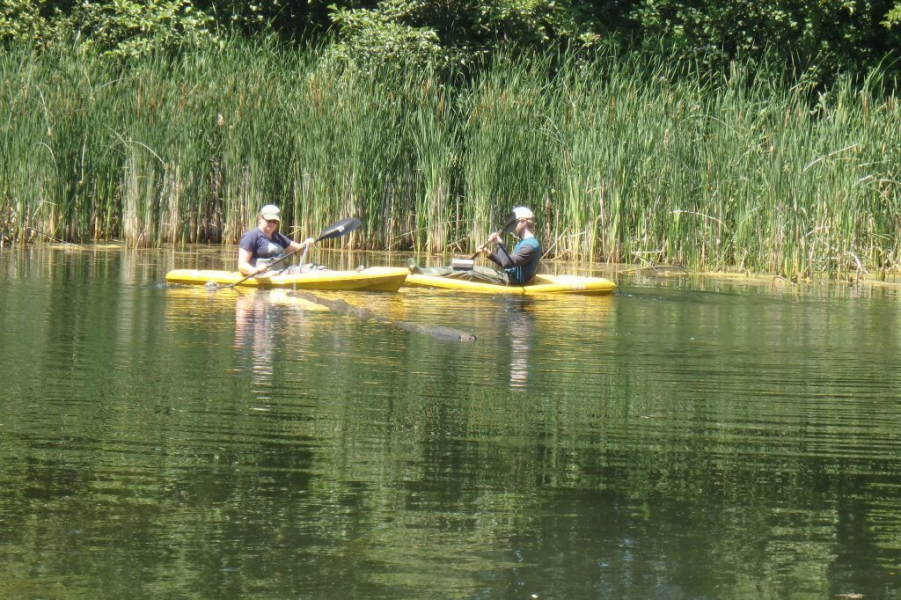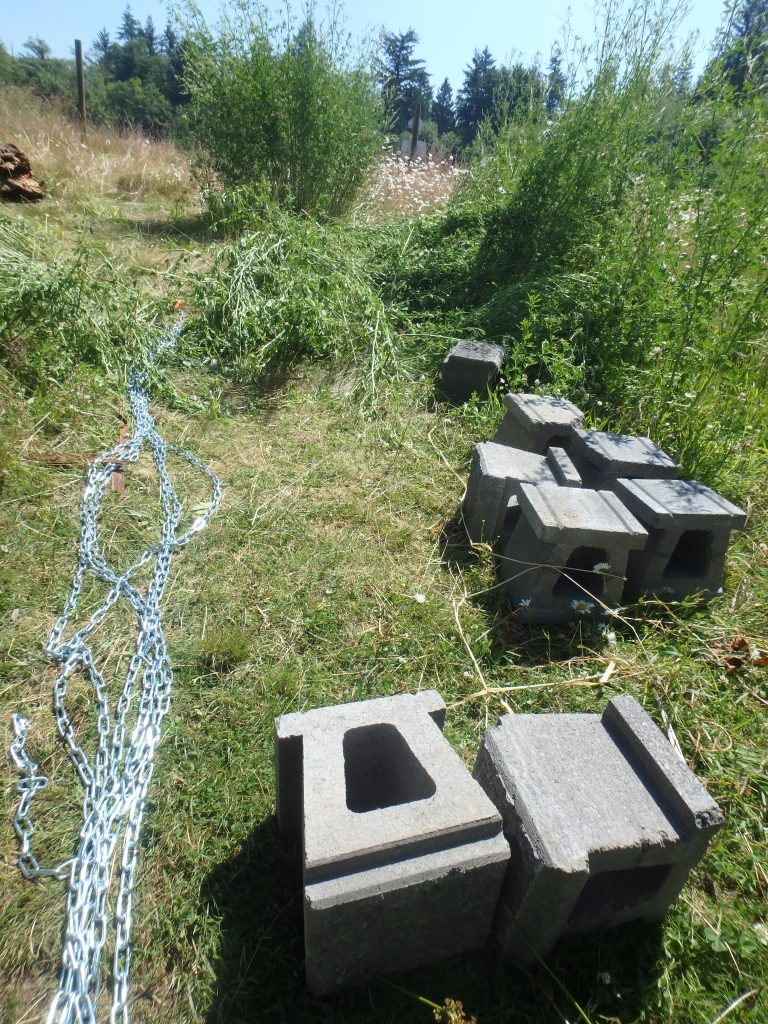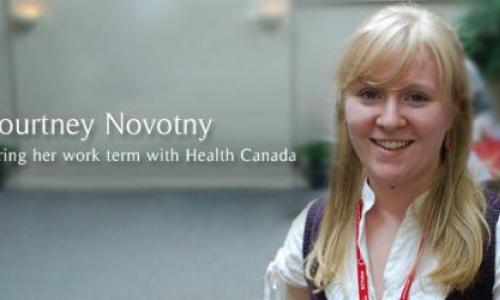
“Hi badgers!”
“Hey capybaras!”
“Hello elk!”
I greeted the animals of the Greater Vancouver Zoo as I made the morning trek from the barn, where the Western Painted Turtles live, to Conservation Corner, where the Oregon Spotted Frogs and Taylor’s Checkerspot Butterflies are tucked away. For 10 weeks, I walked along this path, sometimes even a few times in the day, amid the summer smoke, sun and showers.
I was responsible for looking after hundreds of animals belonging to species endangered in B.C. Every day, like clockwork, I fed turtles crickets, mealworms, shrimp, fish and frogs. I also changed the water in their tubs, pureed lettuce for the tadpoles and crickets, and cared for the butterflies and caterpillars, depending on the time and day.
My days usually ended with writing for the blog or reading through recovery management plans. All in all, I talked to very few humans and handled more poop than most can say!
Among the few humans with whom I interacted, were Andrea Gielens, the Fraser Valley Wetlands Wildlife Project’s Lead Biologist and Liam Krider, a fellow SFU student. We shared the load of the daily tasks so that we could sprinkle our days with projects and field trips. I looked forward to the latter immensely, because transit time gave me the opportunity to bombard Andrea with questions about her programs and the state of endangered species in B.C., and because we got to do some pretty kick-ass stuff.
I attended at least five turtle releases, went on outreach trips, set up basking logs in a man-made lake, and monitored turtle nests. I participated in Burrowing Owl and Oregan Spotted Frog tagging sessions, surveyed turtle traps for hours in a kayak and was only once interrupted by a bear.
It is fair to say that I had a really great co-op term and to show it I gained a fierce farmer’s tan and can now talk for days about Western Painted Turtles. To access ramblings of this sort that further chronicle the Fraser Valley Wetlands Wildlife Project’s summer happenings, and the adventures of its summer Project Assistant (aka me), please read on.
June 28th
Having finished my third week working with the Fraser Valley Wetlands Wildlife Project, I’m starting to get the hang of things! I am learning all about the best ways to care for the headstarting Oregon spotted frogs, western painted turtles, and Taylor’s Checkerspot Butterfly, here at the conservation program in Aldergrove, BC.
It’s been really exciting seeing the animals changing from day to day. Summer is well underway, which means the tadpoles are starting to metamorphose! It has been a long time coming, the tadpoles hatched in late March and so far three tubs are filled with hind-legged, mutant-looking tadpoles, and we’re hoping the rest will soon follow suit. Surely the hot streak we’re about to have will make it happen!
The frogs are reared in tubs filled with water. To mimic a wetland habitat, we add duckweed and floating islands covered with moss to them. Over time, algae accumulates, and critters like daphnia and water boatmen settle in. These tub inhabitants are harmless to the frogs, and create a recycling, almost self-sustaining system; the insects eat the algae and help keep the tub clean!
There are however a select few insects we’d prefer stayed out of these mini-ecosystems. Unfortunately, predacious diving beetles have infiltrated the tubs! Although these are natural predators in wetland ecosystems, we’d like to keep them out of our tubs. They are known predators of small tadpoles!
Andrea, Liam and I have been hunting these pesky critters, crouched on the edge of tubs, with turkey-basters in hand. It’s an ongoing battle, but we are seeing less and less of them!

July 9th
Last Friday was, I think, the hardest I’ve worked since joining the Fraser Valley Wetlands Wildlife Project. Our goal for the day was to install basking logs for Western Painted Turtles in Aldergrove Regional Park. Basking areas are crucial turtle habitat components because turtles digest best while lounging in the sun. It also doesn’t hurt that we’re more likely to spot the little guys if they’re hauled out!
The task facing us was a half-day commitment because it involved anchoring logs to specific spots with cinderblock, so that they don’t drift ashore. It was also a job best tag-teamed. The zoo crew - Andrea, Liam and I, along with Deanna, who works with the Coastal Painted Turtle Project, undertook the job together to lighten the load.
To begin, we hauled the cinderblock from the car to the shore, then became familiar with the heavy logs as we struggled to carry them into the water. Luckily we didn’t have to carry them far; they had been dropped off close to shore.
Preparations made, the zoo crew entered the water on kayaks donning waders and baseball caps, while Deanna stayed behind to nail chain to the logs. She transferred them and the cinderblocks to our kayaks and we ferried them over to their drop locations.
The last step was to hook the chain through the cinderblock and heave it into the water,all while doing our best to not fall off the kayaks. The result of three hours of hard work was nine shiny new basking logs. Back on dry land, I thought water had leaked into my waders because my pants were soaked. Andrea was quick to point out that that was sweat! Although my body was sweaty, scratched and sunburnt, I was proud of the work we had done, and looked forward to a celebratory ice cream run.
July 20th
Life at the zoo, working to rear the conservation animals, has become routine now. I am totally comfortable checking for butterfly eggs, feeding frogs, and scrubbing turtle tubs. Andrea, thankfully, keeps my mind sharp by continually securing new learning experiences for me, sometimes even outside of the framework of the Fraser Valley Wetlands Wildlife Project.
One such instance was a few weeks ago when we took a day trip to Kamloops to attend a couple of burrowing owl tagging sessions! Andrea’s friend Lauren Meads, the director of the Burrowing Owl Conservation Society of BC, invited us to watch and learn.
Burrowing owls were extirpated in BC in 1979. They don’t dig their own burrows but use and modify those made by larger animals like badgers. The expansion of agricultural land use in burrowing owl habitat led to the disappearance of these large digging animals. Since burrows are essential for the owls to nest, roost and rear young, their new non-existence made it impossible for burrowing owls to endure in BC.
The efforts to reintroduce burrowing owls in BC involve setting up artificial burrows with captive bred owl pairs. When I visited the project, the team was tagging the offspring of those breeding pairs. The owlets were just a couple months old, nearing adult size but still down feathered and not yet spotted. They were so cute!
The tagging process started by slowly pushing a plug through the burrow opening and towards the capped end. The little birds were picked up there, transferred to a kennel and taken a couple meters away from the burrow, so the biologists could work without being disturbed by flustered owl parents. The biologists took each owlet, wrapped them in a “burrowing owl burrito”, secured metal tags to each leg, and recorded their weights and measurements.
The tags placed on those tiny legs will help track the owls. When biologists or citizen scientists see tagged burrowing owls in the wild, they can jot down the tag I.D. and report the sighting to the project. Thus, the program can deduce the owl’s movements and determine if the owls are returning home to BC!
I had fun and learned a lot that day, including that I should wear long pants to do burrowing owl work, which was clearly evident to my companions but unbeknownst to me. The forecast was sunny so I wore shorts, but upon arriving I was advised to wear something on my legs to avoid ticks in the tall grass. My final appearance - mosquito pants tucked into boots over jean shorts - garnered many a quizzical glance, but I definitely rocked it.
Aug 13, 2017
Our first Western Painted Turtles hatched on July 24th and we now have a whopping 80 little hatchlings kickin’ it in the barn. My favourite part of the day is coming into work and checking the incubators to discover that a couple more babies have successfully fought their way out of their shell. I love collecting the struggling little turtles and spending time weighing, measuring, and photographing them before letting them join the rest of the newborns.
Baby turtles require different care than adult turtles. They don’t need food for a week after they’ve hatched because they are still absorbing their yolk through the centre of their plastron. We apply germicide to this “belly-button” every day to avoid infections. The belly-buttons disappear eventually along with their eggtooth, a white extension of the turtle beak that hatchlings use to pierce their shell.
Before any babies had hatched, Andrea charged me with the important task of coming up with two hundred names for this years’ turtles. I drew inspiration from my favourite TV shows, books and real-life people. Turtle Hermione hatched yesterday, turtle Tegan is growing and turtle Beyonce has launched her music career.
In other baby news, in mid-July we had around 250 Taylor’s Checkerspot Butterfly larvae hatch. They started out cute but soon developed ferocious appetites that transformed them into poop machines. We now have to vigilantly change their containers and paper towels, sometimes twice a day, which can take quite a while when each caterpillar has to be transferred to the new container using a paintbrush and a spoon.
Reprieve is in sight however, the caterpillars are starting to enter diapause - a state of dormancy during which they web up together and eat nothing until spring. Our careful, intensive summer work has helped butterflies pupate, eclose, mate, lay eggs, hatch and enter diapause. Talk about the circle of life!
Beyond the Blog
-
To learn more about opportunities like Tegan's, visit the Environmental Science Co-op homepage.













